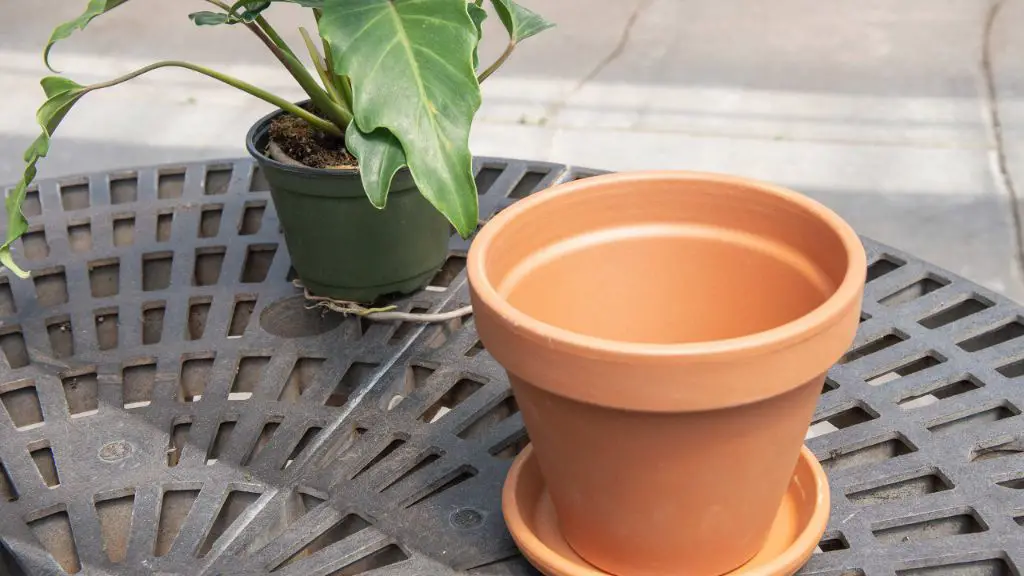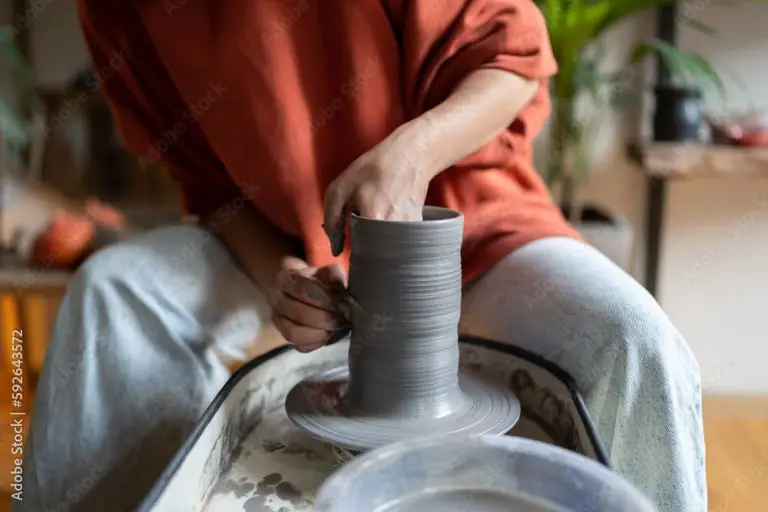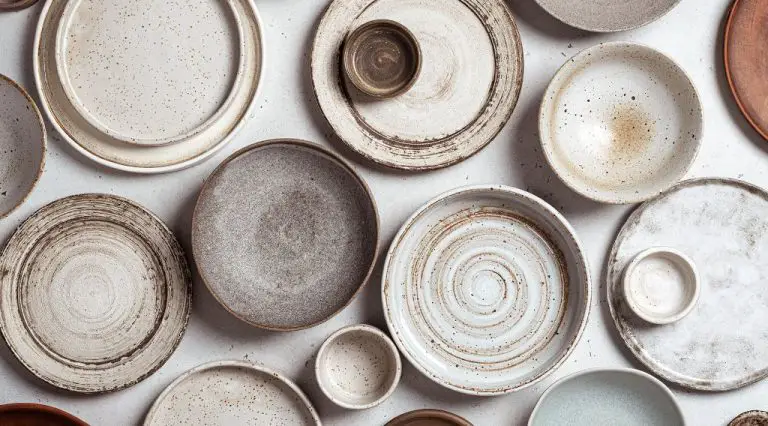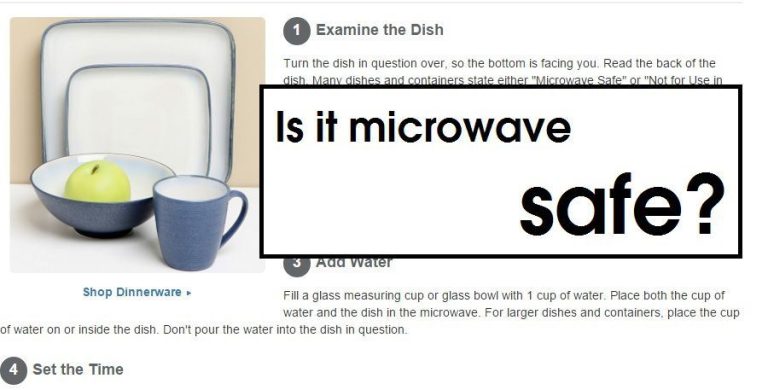Do Plants Grow Better In Terracotta Pots?
This article will examine whether plants grow better in terracotta pots compared to plastic pots. The goal is to provide gardeners and plant enthusiasts with a comprehensive overview of the pros and cons of each type of pot, and recommendations for when terracotta or plastic may be the better choice. Factors such as drainage, aeration, moisture retention, insulation, weight, aesthetics and cost will be considered. Research from academic sources will be cited to support the analysis. By the end, readers should have a clear understanding of the effects different pot materials can have on plant growth and health.
Pros of Terracotta Pots
One of the main benefits of terracotta pots is their porosity. Terracotta is an unglazed clay that is porous and allows air and moisture to penetrate through the pot (https://cleverbloom.com/terracottapots/). The pores in the clay allow excess water to seep out of the drainage holes at the bottom of the pot. This helps prevent soggy soil and overwatering, which can lead to root rot.
The porosity also allows air to circulate to the plant’s roots. This air pruning helps promote healthy root growth. As the roots reach the pot’s interior wall, they become exposed to air from the pores. The roots will stop growing and branch off, creating a dense and healthy root system (https://corisears.ca/benefits-of-terracotta-pots/).
Overall, the porosity and air pruning capabilities make terracotta an excellent choice for plants that thrive in well-draining, aerated soil. It’s especially ideal for cacti, succulents, citrus trees, rosemary, lavender and other Mediterranean plants.
Cons of Terracotta Pots
One of the biggest downsides of terracotta pots is that they require more frequent watering. Due to their porous nature, terracotta pots allow moisture to evaporate through the sides and bottom of the pot at a faster rate than other materials like plastic or glazed ceramics. As moisture escapes, the soil dries out quicker (Source). Plants in terracotta pots may need watering every couple of days or even daily depending on factors like plant type, climate, exposure to sun, and pot size.
The accelerated drying can be problematic for some plants that prefer consistently moist (but not wet) soil. If the moisture levels get too low too often, it can cause stress, poor growth, and root damage. For instance, ferns and calathea prefer reliably damp soil and can struggle in terracotta (Source). The frequent watering terracotta requires also takes more time and effort compared to other pot materials.

Ideal Uses for Terracotta
Terracotta pots are an excellent choice for growing succulents and cacti. The porous nature of terracotta allows excess moisture to evaporate, which helps prevent overwatering. Succulents and cacti thrive in dry, well-draining soil, making terracotta an ideal vessel for them.
According to https://livingcolorgardencenter.net/gardening/the-dos-and-donts-of-terracotta-plant-pots/, cacti and succulents are some of the best plants to grow in terracotta pots. The terracotta helps wick away moisture from the soil, preventing rot in these drought-tolerant plants. Popular succulents like echeveria, jade plant, aloe vera, and sedum grow well in terracotta’s fast-draining environment.
Cacti that thrive in terracotta’s dry conditions include mammillaria, opuntia, echinopsis, and gymnocalycium species. The terracotta allows excess moisture to evaporate from the soil surface while still retaining some moisture at the bottom where the roots are. This creates an ideal dry but not bone-dry environment.
Pros of Plastic Pots
One of the main benefits of plastic pots is that they retain moisture well. Unlike porous terracotta pots which allow evaporation, plastic is non-porous so it keeps the soil moist for longer periods of time between waterings (Lancaster). This helps reduce watering frequency and makes caring for plants easier, especially for beginning gardeners or plants that require more humid conditions. Plastic pots are also lighter than clay, which makes them easier to move around.
Studies have shown that plants in plastic containers have more available water and nutrients and experience less temperature fluctuation than plants in clay pots. The moisture retention properties of plastic lead to more vigorous growth and less drought stress (https://getplantlogic.com/benefits-plastic-garden-pots/). Plastic pots come in an array of sizes and colors, providing versatility and options to suit different spaces and planting needs.
Cons of Plastic Pots
While plastic pots have benefits like being lightweight and inexpensive, they also come with some downsides. One major disadvantage of plastic pots is they can cause root rot in plants.
Plastic is non-porous, so water does not evaporate through the sides of the pot like terracotta. This means the soil stays wet for longer periods. With poor drainage or overwatering, the roots are more likely to rot in a plastic pot. According to one source, plastic “can leave roots susceptible to rot if overwatered” (source).
Additionally, plastic traps moisture against the sides of the roots. The increased humidity creates an environment conducive to fungal growth. This can also lead to root rot over time, even if the watering schedule is correct. The non-breathability of plastic is the main factor that increases the risk of root rot.
To prevent problems with root rot in plastic pots, it’s important to use a very porous soil mix and be careful not to overwater. Adding extra drainage holes can also help improve air circulation to the roots. Plastic pots work best for plants that prefer evenly moist soil and less frequent watering.
Ideal Uses for Plastic
Plastic pots work well for thirsty plants and tropicals that require frequent watering. The porous nature of terracotta can lead to rapid moisture loss, which is not ideal for these types of plants. Plastic helps retain moisture and creates a humid microclimate beneficial to tropical plants (https://www.gardenersworld.com/plants/top-10-plants-for-containers/). Some great thirsty plants for plastic pots include:
- Coleus
- Impatiens
- Petunias
- Geraniums
- Begonias
Tropical plants that do well in plastic planters include:
- Hibiscus
- Mandevilla
- Bougainvillea
- Passion flowers
- Angel wing begonias
The water retention properties of plastic makes caring for these types of plants much easier. Just be sure the pot has adequate drainage holes to prevent soggy soil.
Other Factors to Consider
When choosing between terracotta and plastic pots, it’s important to consider other factors like the needs of the plant and the climate where the plant will be grown. Some key things to keep in mind include:
Plant Type – Certain plants like orchids and ferns prefer the breathability of terra cotta over plastic. Plastic may retain too much moisture for these varieties. However, plants like succulents that need less frequent watering can do well in plastic (Source).
Watering Needs – Terracotta pulls moisture from the soil and lets it evaporate through the pot walls. This means plants will need more frequent watering in terracotta. Plastic retains moisture better for plants that don’t like to dry out (Source).
Climate – In hot, dry climates, plastic pots may hold needed moisture better. In cool, humid climates, terracotta allows more breathability and drainage that prevents root rot (Source).
Overall, consider the specific needs of the plants you want to grow, as well as your climate, when deciding between terracotta and plastic pots.
Recommendations
When choosing between terracotta and plastic pots, consider the needs of your specific plants. Here are some recommendations on when to use each type of pot:
Use terracotta pots for:
- Plants that require excellent drainage and air circulation like cacti and succulents. The porous nature of terracotta allows excess water to evaporate.
- Plants that thrive in drier conditions. Terracotta’s breathability prevents moisture from getting trapped.
- Outdoor plants in hot climates. Terracotta’s cooling properties help prevent soil and roots from overheating.
Use plastic pots for:
- Seedlings or cuttings that need constant moisture. Plastic retains moisture and prevents roots from drying out.
- Indoor plants that require stable moisture levels like ferns and peace lilies. Plastic prevents fluctuations in moisture.
- Outdoor plants in rainy climates. Plastic protects roots from getting waterlogged in wet conditions.
In general, terracotta excels for dry-loving plants while plastic works better for moisture-loving plants. Consider your climate, plant needs, and watering habits when choosing between the two.
Conclusion
In summary, both terracotta and plastic pots have their advantages and disadvantages for growing plants. Terracotta excels at draining away excess moisture while plastic helps retain moisture better. For plants that require more water, plastic may be the better choice, while terracotta suits drought-tolerant varieties. Both can work well when matched to the right conditions and plants. The most important factor is providing proper soil, drainage, sunlight and care. With good gardening practices, healthy plants can thrive in either pot type.
When deciding between terracotta and plastic, consider the needs of the specific plants, the environment, and your personal preferences. Terracotta suits a natural, earthy aesthetic, while plastic offers more versatility. With attention to watering and drainage, either option can produce robust, beautiful plants. The key is finding the right pot for the right plant and gardening style.



